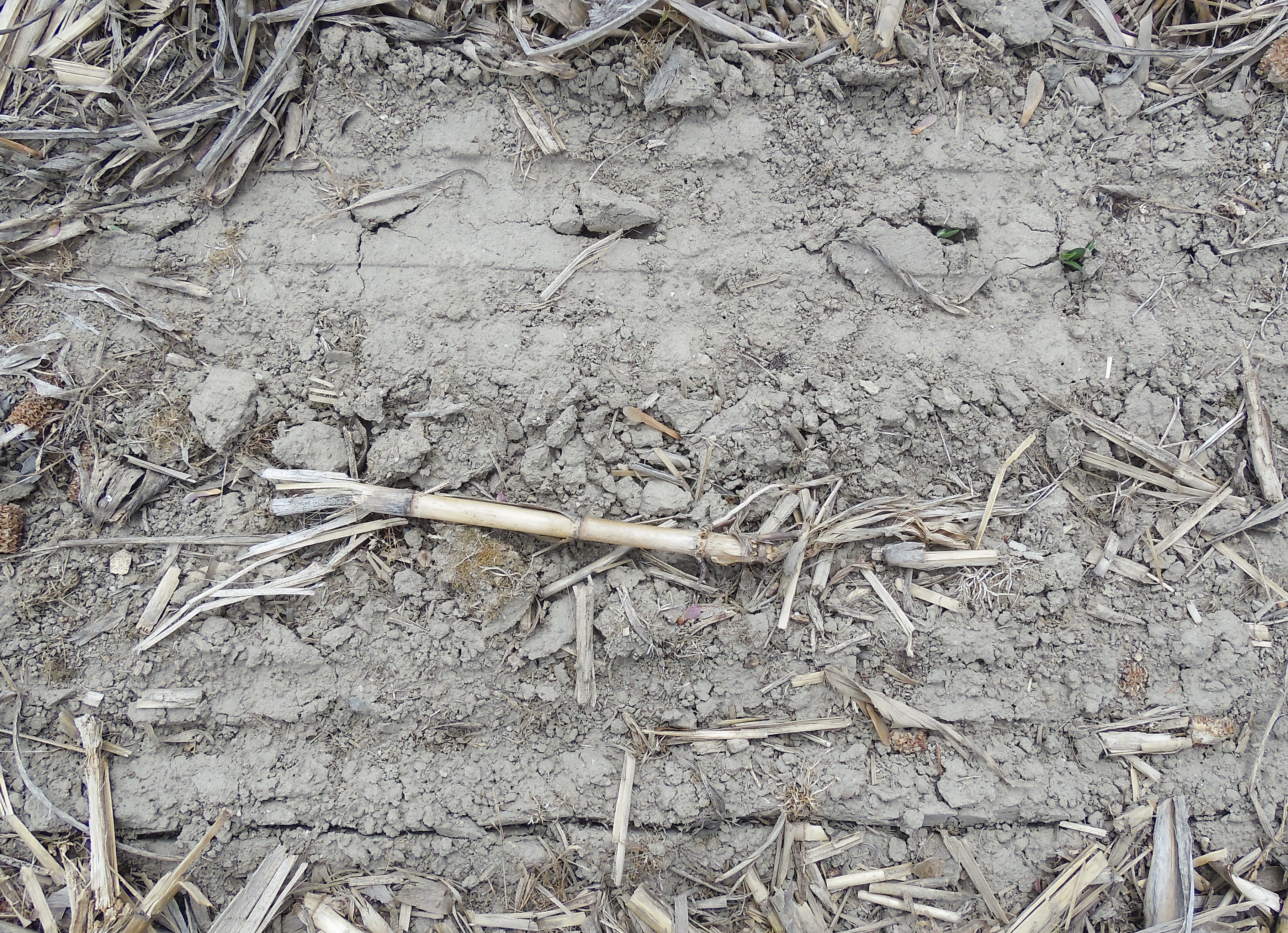Delayed and variable soybean emergence
Learn how to assess and respond to the delayed and variable soybean emergence caused by seed corn maggots, crusting or dry soil conditions.

Soybean emergence has been delayed and variable across Michigan and this has producers replanting entire fields or large areas of fields. In some cases, the replanted beans are being planted at rates nearly as high as the original planting date. Even when seed for replanting is provided at little or no cost, producers should still make replant decisions carefully as there are additional costs involved (labor, fuel and equipment wear and tear) and the risk of reducing the stand of the original planting.
The first step is to identify the cause of the delayed emergence. The main factors affecting emergence this spring were the cold conditions that prevailed for the previous two weeks and the lack of rain and ensuing dry soil. The cold soil delayed emergence making the young seedlings more susceptible to damage from soil insects. Seed corn maggot (Photo 1) is a likely culprit in fields that were planted within two weeks after incorporating green weeds, a cover crop or manure with tillage.
In fact, seed corn maggot is a major problem this spring in fields that followed seed corn in southern Michigan. Many seed corn fields were planted to cover crops last fall and due to the excellent growing conditions, these produced lush growth. The cover crops were terminated and incorporated into the soil this spring prior to planting, which decayed and attracted seed corn maggot adults. Many fields were also planted in April around the time of peak emergence and egg laying of the seed corn maggot adults. All these factors combined to create a severe seed corn maggot outbreak that has overcome insecticide seed treatments in southern Michigan.
The lack of rain and dry soil conditions can delay emergence in two ways. The first is that the soil may be dry and crusted above the seedling and the seedlings have reduced pushing power when moisture is limiting. If this is the problem, using a rotary hoe to break the crust will be the best choice if the plants are healthy but struggling to emerge. Also, a timely rain would significantly improve emergence in these fields. The plants that are just cracking the soil at the top of Photo 2 will emerge in a day or two even without rotary hoeing or addition rain. However, the seed that was placed in the open seed furrow at the bottom of the photo is unlikely to produce viable plants as the seed initiated the germination process but died.

The other way that dry soil causes delayed and variable emergence is that the seeds may not have had enough moisture to complete the germination process. This is potentially the most serious situation. Shawn Conley of the University of Wisconsin wrote an excellent article on this topic, “Variable Germination and Emergence in Soybean: Which Seeds Are Still Viable?”
Once you have identified the cause of the variable and delayed emergence, you need to determine the number of viable plants per acre. This is important as healthy, emerged or emerging plants from the original planting dates have excellent yield potential and should be preserved if possible. When assessing seed corn maggot infestations, plants that have emerged and have moderate feeding confined to the cotyledons should be considered viable. We have multiple years of research results showing that thin soybean stands can produce surprisingly high yields. If you have 65,000 viable plants per acre, replanting is probably not warranted.
If you decide that you need to supplement the existing stand by planting additional seed, pay close attention to planting depth, planting rate and preserving as many of the plants from the original planting date as possible. You want to avoid planting the supplemental seed into marginal and variable moisture. You either want to plant deeper into adequate moisture or plant shallower into dry soil and wait for rain. Applying irrigation water to promote germination of the supplemental planting is recommended. The risk of significant seed corn maggot damage to the supplemental planting is minimal so insecticidal seed treatment is not recommended.
When replanting, select planting rates that will supplement the existing stand and not totally replace it. Aim for supplemental planting rates that will produce a combined final stand of 110,000 to 130,000 plants per acre.
Use the information in this article and from your seed supplier to make the best management decisions for your fields showing delayed or variable emergence.



 Print
Print Email
Email